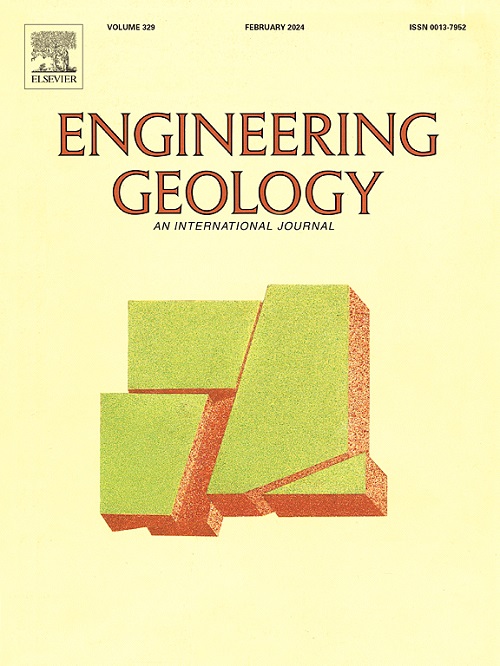基于优化二值化算法的岩体爆炸损伤图像识别与定性方法
IF 6.9
1区 工程技术
Q1 ENGINEERING, GEOLOGICAL
引用次数: 0
摘要
岩体损伤的定量分析在工程地质、灾害预防、采矿、岩土工程和结构工程等领域至关重要。随着非接触测量技术和分形理论的发展和应用,基于图像的损伤识别方法越来越重要。本文提出了一种优化的二值化算法,用于识别和描述花岗岩爆炸图像中的损伤区域。该方法包括滤波、数学形态学运算和连接识别,可有效去除背景噪声,同时保留受损区域的清晰边界。该方法从损伤形态和特征参数两方面准确捕捉了花岗岩的爆炸损伤。此外,还引入了一致系数(COA)来定量评估不同方法识别受损区域的准确性。实验结果表明,与大津方法、Bernsen 算法、Niblack 算法、Sauvola 算法和 K-means 图像聚类算法等常用方法相比,所提出的方法在识别准确率和参数一致性方面表现更佳,在不同的实验环境下,COA 值均接近 1。此外,所提出的方法在处理不均匀光照、减轻岩石表面纹理和爆炸碳化区的干扰方面表现出色,并在复杂场景中表现出显著的鲁棒性。本文的研究成果为工程地质与计算机视觉技术的融合提供了启示。它们为挖掘破坏区(EDZ)的破坏识别、地质灾害评估和结构破坏预警系统提供了有价值的参考。本文章由计算机程序翻译,如有差异,请以英文原文为准。
Optimized binarization algorithm-based method for the image recognition and characterization of explosion damage in rock masses
The quantitative analysis of rock mass damage is crucial in fields such as engineering geology, disaster prevention, mining, geotechnical engineering, and structural engineering. With the advancement and application of noncontact measurement technologies and fractal theory, image-based damage identification methods are gaining increasing importance. This paper presents an optimized binarization algorithm for identifying and characterizing damage zones in granite explosion images. The method involves filtering, mathematical morphology operations, and connectivity recognition to effectively remove background noise while preserving clear boundaries of the damaged areas. It accurately captures the explosion damage in granite, both in terms of damage morphology and characteristic parameters. Additionally, the coefficient of agreement (COA) is introduced to quantitatively assess the accuracy of different methods in identifying damaged areas. The experimental results show that, compared with commonly used methods such as Otsu's method, Bernsen's algorithm, Niblack's algorithm, Sauvola's algorithm, and the K-means image clustering algorithm, the proposed method performs better in terms of identification accuracy and parameter agreement, achieving COA values near 1 across diverse experimental environments. Furthermore, the proposed method excels in handling uneven lighting, mitigating interference from rock surface textures and explosion carbonization zones, and demonstrates significant robustness in complex scenarios. The findings of this paper provide insights into the integration of engineering geology and computer vision technology. They offer valuable references for damage identification in excavation damage zones (EDZs), geological disaster evaluation, and structural damage warning systems.
求助全文
通过发布文献求助,成功后即可免费获取论文全文。
去求助
来源期刊

Engineering Geology
地学-地球科学综合
CiteScore
13.70
自引率
12.20%
发文量
327
审稿时长
5.6 months
期刊介绍:
Engineering Geology, an international interdisciplinary journal, serves as a bridge between earth sciences and engineering, focusing on geological and geotechnical engineering. It welcomes studies with relevance to engineering, environmental concerns, and safety, catering to engineering geologists with backgrounds in geology or civil/mining engineering. Topics include applied geomorphology, structural geology, geophysics, geochemistry, environmental geology, hydrogeology, land use planning, natural hazards, remote sensing, soil and rock mechanics, and applied geotechnical engineering. The journal provides a platform for research at the intersection of geology and engineering disciplines.
 求助内容:
求助内容: 应助结果提醒方式:
应助结果提醒方式:


